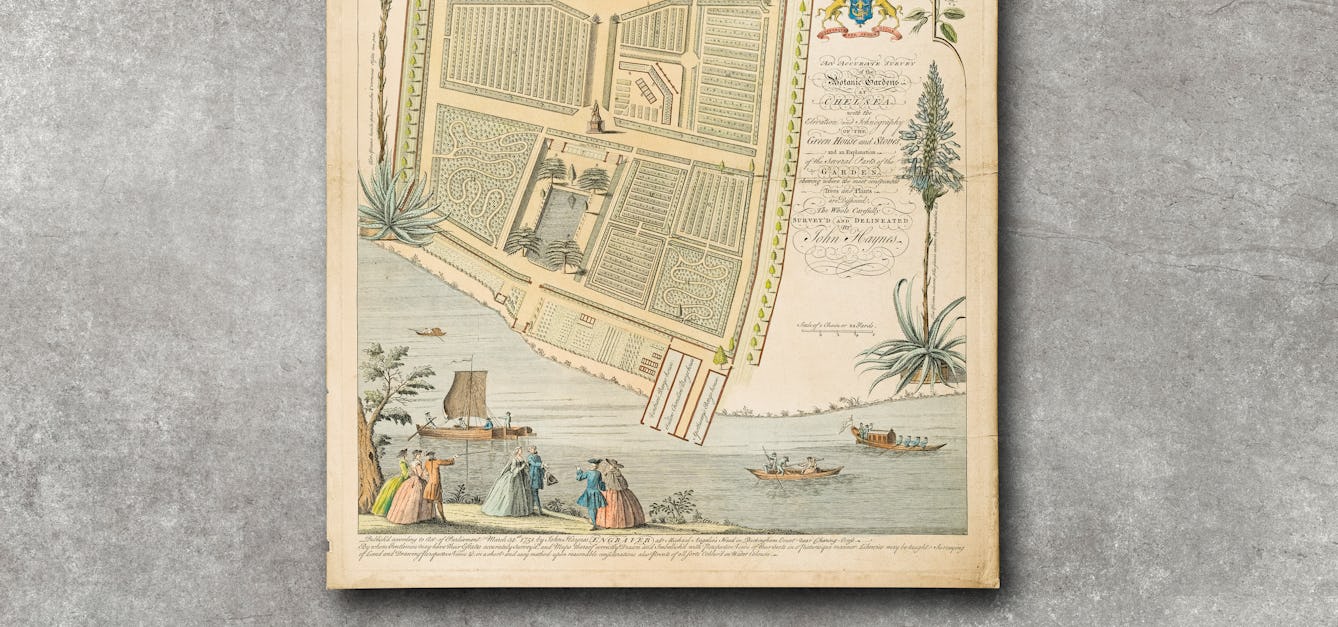Stories

- Article
A history of mindfulness
Matt Drage questions how an ancient religious practice became a secular cure for stress.

- Article
Love, longing and tea from the polski sklep
For people of Polish origin in the UK, herbal tea is closely tied to health and shared history. Kasia Tomasiewicz explores her changing relationship to these tea-related cultural habits.

- Article
Plant portraits
The beautiful and mysterious illustrations in medieval herbals convey a wealth of knowledge about the plants they portray.

- Article
The healing power of the physic garden
Having experienced the healing power of plants and gardens, Iona Glen goes in search of present-day “physic gardens” and their origins in history.
Catalogue
- Books
- Online
Principles of Chinese Herbal Medicine.
Hicks, JohnDate: 2013- Books
Critical Approaches to the History of Western Herbal Medicine : From Classical Antiquity to the Early Modern Period / edited by Susan Francia and Anne Stobart.
Date: 2014- Archives and manuscripts
Fernandus, N. Herbal
Date: c. 1500-1525Reference: MS.270/1Part of: Feradus, Nicholaus (& others)- Books
Migraine : a history / Katherine Foxhall.
Foxhall, KatherineDate: 2019- Books
Comfrey - an ancient medicinal remedy : With a postscript on: The analysis, cooking, and cultivation of comfrey, by Lawrence D. Hills.
MacAlister, Charles J. (Charles John), 1860-1943.Date: [1966?]






![Hepatica nobilis Mill. Ranunculaceae. Liverwort - not to be confused with the lichen of the same name. Distribution: North America. Liverwort (‘liver plant’): discontinued herbal medicine for disorders of the liver. The name and the use to which the Liverworts have been put medicinally is suggested, according to the doctrine of signatures, by the shape of the leaves which are three-lobed, like the liver. It is little used in modern herbalism but was employed in treating disorders of the liver and gall bladder, indigestion etc. It is highly toxic. Hepatica acutiloba was widely used for liver disorders in the 1880s, with up to 200,000 kilos of leaves being harvested per annum to make liver tonics - which eventually caused jaundice. Gerard (1633) calls it Hepaticum trifolium, Noble Liverwort, Golden Trefoile and herbe Trinity and writes: 'It is reported to be good against weakness of the liver which proceedeth from a hot cause, for it cooleth and strengtheneth it not a little. ' He adds ' Baptista Sardus[a Piedmontese physician fl. 1500] commendeth it and writeth that the chiefe vertue is in the root](https://iiif.wellcomecollection.org/image/B0009042/full/282%2C/0/default.jpg)
![Hepatica nobilis Mill. Ranunculaceae. Liverwort - not to be confused with the lichen of the same name. Distribution: North America. Liverwort (‘liver plant’): discontinued herbal medicine for disorders of the liver. The name and the use to which the Liverworts have been put medicinally is suggested, according to the doctrine of signatures, by the shape of the leaves which are three-lobed, like the liver. It is little used in modern herbalism but was employed in treating disorders of the liver and gall bladder, indigestion etc. It is highly toxic. Hepatica acutiloba was widely used for liver disorders in the 1880s, with up to 200,000 kilos of leaves being harvested per annum to make liver tonics - which eventually caused jaundice. Gerard (1633) calls it Hepaticum trifolium, Noble Liverwort, Golden Trefoile and herbe Trinity and writes: 'It is reported to be good against weakness of the liver which proceedeth from a hot cause, for it cooleth and strengtheneth it not a little. ' He adds ' Baptista Sardus [a Piedmontese physician fl. 1500] commendeth it and writeth that the chiefe vertue is in the root](https://iiif.wellcomecollection.org/image/B0009043/full/282%2C/0/default.jpg)
![Scutellaria baicalensis Georgi Lamiaceae. Baikal skullcap. Distribution: China. There are several hundred species of Scutellaria, also known as skull caps, so correct identification is important - in particular from Scutellaria lateriflora an American species known as Blue skullcap. The latter is used as an abortifacient and to expel placenta by the Cherokee and for cleaning the throat by the Iroquois (Austin, 2004). Much vaunted as a treatment for rabies with unlikely statistics (1,400 cases cured by one doctor alone). Also as ‘antispasmodic, nervine, [for] chorea, convulsions, tetanus, tremors, delirium tremens, [and as a] diaphoretic and diuretic'. Toxicity symptoms include mental confusion, stupor, headache, vertigo, photophobia, dilated pupils, difficulty in micturition, bradycardia, tremulousness and languor, followed by wakefulness and restlessness (Milspaugh, 1974). Hutchens (1991) reported that it reduces sexual desire and was used for almost every nervous illness. Scutellaria baicalensis contains baicalin, baicalein and wogonin (European Medicines Agency, September 2010). It is used in Traditional Chinese Medicine for treating inflammation, cancer, bacterial and viral infections of the lungs and gut and is one of the '50 Chinese herbs' in the lists of some authors. Scutellaria lateriflora (combined with Verbena officinalis, Passiflora incarnata and the seed of Avena sativa (oats) is licensed for use in Britain as a herbal medicine for temporary relief of mild symptoms of stress such as mild anxiety and to aid sleep, based upon traditional use only. Scutellaria baicalensis is not licensed for use in the UK (UK Medicines and Healthcare Products Regulatory Agency (MHRA)). Photographed in the Medicinal Garden of the Royal College of Physicians, London.](https://iiif.wellcomecollection.org/image/B0009188/full/282%2C/0/default.jpg)
